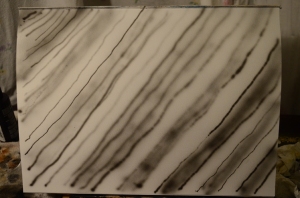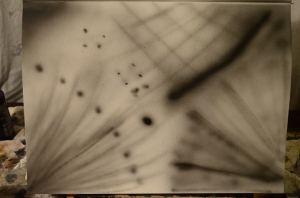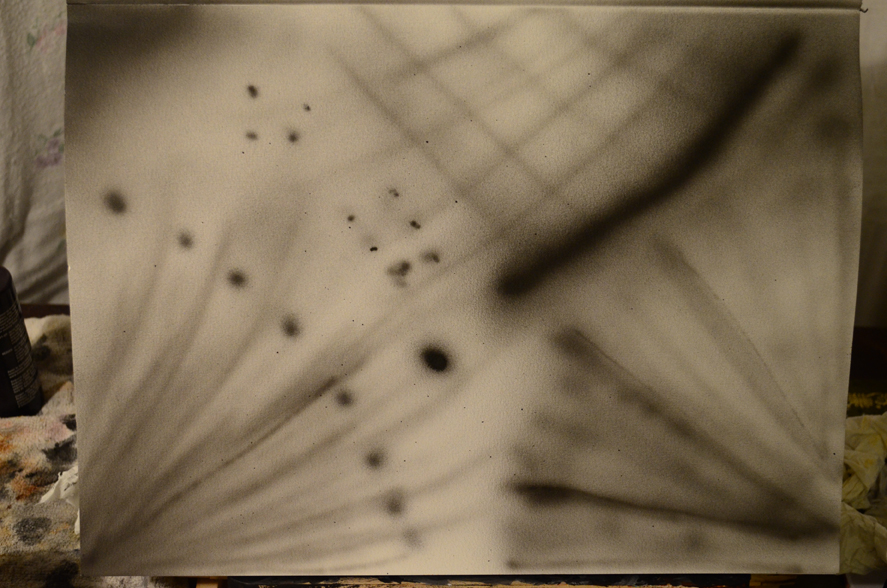
In this exercise I followed similar steps to those in the first exercise of the drawing course. The aim was to see what marks I could make wit the airbrush and record what I did to make those marks.
Unlike the pencil where you can hold it at different angles with your fingers at different distances away from the tip or press down with varying pressure to get lots of types of marks, with a gravity feed airbrush it always has to be upright. Nonetheless, you can still achieve different marks.
Materials used for this exercise
- Iwata Eclipse HP-CS
- Badger Air Compressor
- Sealer Dark
- 190 gsm drawing paper
My Findings
Thin Lines – If I held the airbrush close to the paper with minimum pressure on the trigger (pulling back) I created light, thin lines. If I applied more pressure I created dark, thin lines. If I applied to much pressure then to much paint come out and the lines smudged. Although thin lines would be good for drawing outlines I’m not sure if an airbrush artist would draw first in airbrush… would he draw in pencil or chalk first?

Broad lines – Broader lines are made in much the same way as the thin lines but with more distance between the airbrush and the surface being painted on. However if used to fill in blocks of colour or shading it is pretty difficult to layer the paint evenly, this will take a lot of practise.
Covering large areas – The Eclipse HP-CS seems to be for finer detail, although I bought it believing it was a good all rounder. It doesn’t seem to cover large areas very well so a larger spray gun will probably be needed.
Spots and dots – As above with thin lines and broader lines the same effects can be achieved with spots, with the airbrush close to the paper it makes a more defined spot, moving the airbrush away from the paper for a larger spread.
Conclusion

A wide range of marks can be made with the airbrush, which with a bit of practice can create some really smooth lines and effects but at this stage what I am lacking is control.

